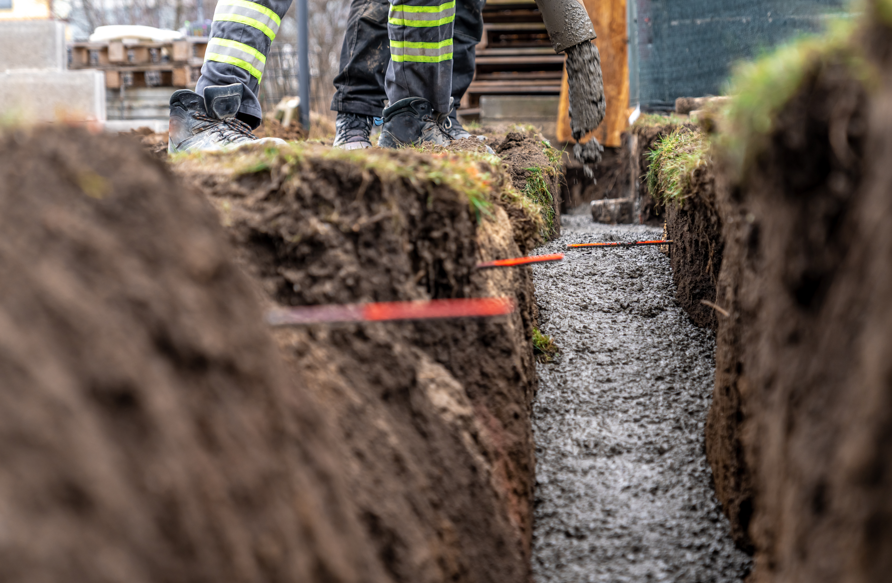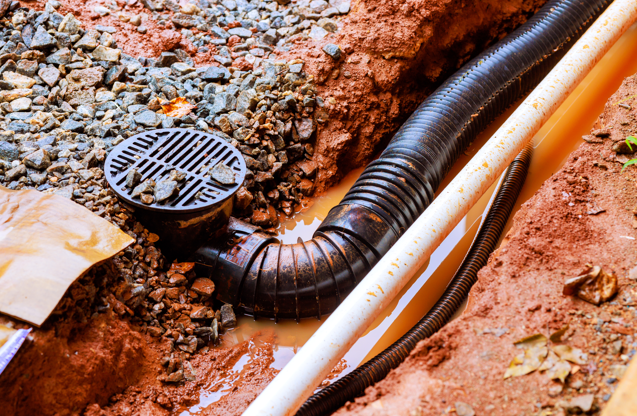Stop Hidden Damage Fast: The Ultimate Guide to Underground Water Leak Detectors
- Staff Desk
- Jul 29
- 5 min read

The Silent Destroyer Beneath Your Feet
Did you know that the average household leaks waste nearly 10,000 gallons of water every year? Even more alarming, many of these leaks happen undetected underground—quietly damaging your foundation, increasing your bills, and even inviting mold and structural issues.
Welcome to the world of underground water leak detectors—your first line of defense against costly water damage.
Whether you're a homeowner, property manager, or commercial facility operator, this guide will show you how to detect underground leaks early, stop water waste, and protect your investments. You’ll learn how leak detection systems work, what features to look for, and which tools are best suited for your unique needs.
Let’s dive in and stop those invisible leaks—before they turn into expensive disasters.
1. Why Underground Leaks Are a Growing Problem

Water is life—but uncontrolled, it's a silent destroyer.
Underground leaks are more common than most realize, especially in aging infrastructure. In the U.S. alone, over 2.1 trillion gallons of treated drinking water are lost each year due to leaks—most of them underground.
These leaks are:
Invisible to the naked eye
Hard to hear until serious damage occurs
Expensive to locate without the right tools
Real-World Impact:
$9,000+ average repair cost for severe water damage
30% spike in monthly water bills from undetected leaks
50% higher risk of mold and foundation issues
The takeaway? Time is money—and waiting costs more than you think.
2. What Is an Underground Water Leak Detector?
Simply put, an underground water leak detector is a device or system that pinpoints hidden water leaks below the surface—usually in pipes running beneath your home, lawn, driveway, or building.
These high-tech tools use a mix of technologies, such as:
Acoustic Sensors: Detect sound frequencies from leaking water
Thermal Imaging: Spots temperature variations from wet areas
Ground Penetrating Radar (GPR): Visualizes underground anomalies
Moisture Sensors: Measure water content in soil
They're used in residential, commercial, municipal, and industrial settings—and they’re changing the game when it comes to fast, non-invasive leak detection.
3. Why Early Detection Saves Thousands
Think you can wait? Think again.
Here’s what delaying underground leak detection really costs:
Structural damage: Saturated soil can lead to cracked foundations
Skyrocketing water bills: A pinhole leak can waste over 90,000 gallons a month
Mold infestations: Moist environments breed mold spores in just 24-48 hours
Legal liability: Businesses may face lawsuits for property damage or unsafe environments
💡 Pro Tip: Catching a leak early can reduce repair costs by up to 85%.
The longer you wait, the deeper the damage goes. That’s why having an effective underground leak detector isn’t just smart—it’s essential.
4. Top Features to Look For in Leak Detection Systems
Not all detectors are created equal. To find the best underground water leak detector, look for these must-have features:
✅ Accuracy
Should detect leaks within inches, not feet.
Look for systems with high-sensitivity sensors.
✅ Non-invasive Detection
No digging or demolition required.
Acoustic or radar-based systems are ideal for this.
✅ Real-Time Alerts
Especially critical for commercial and smart-home systems.
Look for Bluetooth or Wi-Fi integration.
✅ Durability
For long-term use, opt for rugged, weather-resistant hardware.
✅ Easy User Interface
Especially important for DIY users.
Prioritize devices with clear visuals and intuitive controls.
5. Best Types of Underground Leak Detectors in 2025
Each application calls for a different approach. Here are the top types of detectors and where they shine:
Detector Type | Best For | Technology |
Acoustic Leak Detectors | Outdoor pipes, slabs | Sound wave detection |
GPR (Ground Penetrating Radar) | Commercial sites | Radar imaging |
Thermal Imaging Cameras | Residential interiors | Infrared temperature mapping |
Smart Moisture Meters | Lawns, gardens | Soil moisture content |
Digital Leak Loggers | Municipal systems | Flow and pressure monitoring |
💬 Expert Insight: Acoustic leak detectors remain the gold standard for underground leak location thanks to their pinpoint accuracy and fast deployment.
6. DIY vs. Professional Detection: What’s Right for You?
DIY Leak Detection Tools:
Great for small homes or quick checks
Cost: $100 - $500
Tools include handheld leak microphones, moisture probes, or smart sensors
Professional Leak Detection Services:
Necessary for large or complex leaks
Cost: $300 - $1,500+, depending on size and location
Use specialized tools like GPR, correlators, and thermal imaging
🧠 Bottom Line: Use DIY tools for monitoring, and call professionals for deep leaks or if you suspect structural issues.
7. How to Detect an Underground Water Leak (Step-by-Step)
If you suspect a leak, here’s how to act fast:
🔍 Step 1: Watch Your Water Bill
Unexplained increases? A hidden leak is likely.
🧪 Step 2: Perform a Meter Test
Turn off all water sources
Check your water meter
Wait 1 hour—if the dial moves, you have a leak
🔦 Step 3: Use an Underground Leak Detector
Deploy acoustic sensor or smart leak probe
Sweep the suspected area
Listen or view visual indicators
🚨 Step 4: Mark the Leak Area
Use tape or flags to note the most active leak zones
🛠️ Step 5: Repair Immediately
Either DIY for small issues or contact a licensed plumber
8. Top 5 Underground Water Leak Detectors Ranked (2025 Update)
Here are the best underground leak detectors based on performance, ease of use, and value:
1. Fuji Tecom LD-18 Digital Leak Detector
Type: Acoustic
Best for: Pros & municipalities
Pros: Extreme accuracy, digital display
Cons: Pricey
Price: ~$2,400
2. RD5000WL Leak Locator
Type: Utility-grade acoustic system
Pros: Deep detection, clear visuals
Cons: Not DIY-friendly
Price: ~$1,900
3. GenEar LE Water Leak Locator
Type: Mid-range acoustic detector
Pros: Affordable, sensitive
Cons: Best for small-scale use
Price: ~$750
4. Flir ONE Pro Thermal Camera
Type: Smartphone thermal imaging
Pros: Mobile, easy to use
Cons: Surface-level only
Price: ~$400
5. Honeywell Lyric Wi-Fi Leak & Freeze Detector
Type: Smart sensor
Pros: Real-time alerts, app-based
Cons: Limited to high moisture areas
Price: ~$99
9. The Hidden Cost of Ignoring Underground Leaks

The worst leaks are the ones you don’t see.
Here’s what could happen if you ignore that subtle drip beneath your yard:
Foundation Collapse: Water erodes support over time
Mold Lawsuits: Especially in commercial or rental properties
Insurance Denials: Most policies don’t cover gradual damage
Property Value Loss: Buyers avoid homes with water issues
⚠️ Urgency Tip: If you suspect any leak, act within 24 hours. Delaying repairs multiplies your risk and your bill.
10. FAQs About Underground Leak Detection
Q: Can I detect a leak under concrete?
A: Yes. Use acoustic sensors or thermal imaging to hear or “see” through slabs.
Q: Will my insurance cover leak detection?
A: Sometimes. Sudden leaks are often covered, but gradual leaks typically are not.
Q: How often should I check for leaks?
A: At least once every 6 months, especially in older homes or commercial buildings.
Q: Is there an app for underground water leak detection?
A: Yes. Smart systems like Flo by Moen or Phyn Plus offer app-based leak alerts.
11. Final Thoughts: Protect Your Property Now
Underground leaks are silent, sneaky, and expensive.
But with the right underground water leak detector, you don’t have to live in fear of hidden water damage.
✅ Stop wasting money✅ Avoid structural nightmares✅ Gain peace of mind


Comments